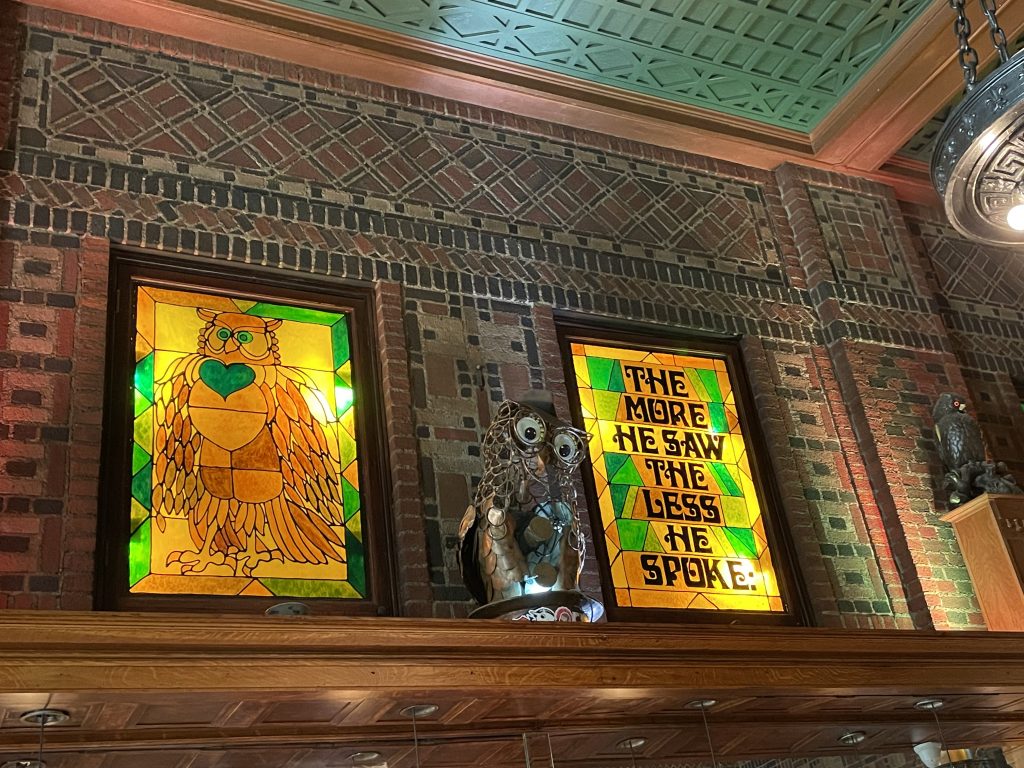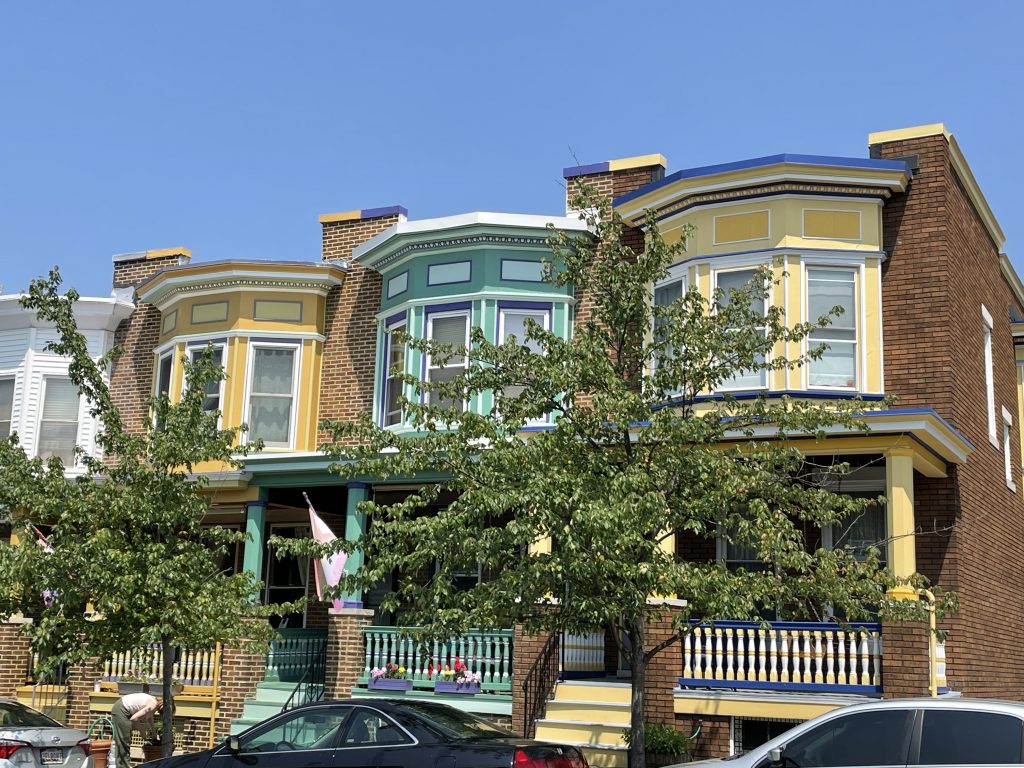By a totally crazy coincidence, Doug and I were visiting Baltimore at the same time as our lovely and adventurous friends Don and Jen.
Don was in town for a conference, so we only got to see him here and there, but we took Jen to all the weird and random places we like to visit. I’m not sure she’ll be letting us know next time she’s traveling.
Here they are at the kids’ table at dinner at R and R Taquerias, a Mexican restaurant that has been featured on Diners, Drive-ins and Dives.
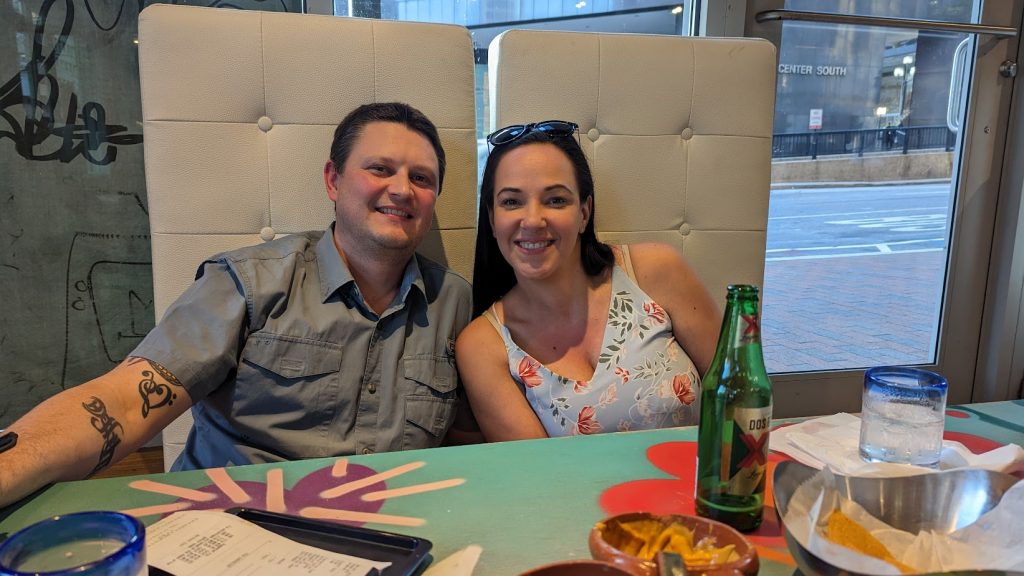
One fun spot we all got to go visit the Ministry of Brewing, a craft brewery located inside a former church (the cover photo above).
St. Michael’s Church operated from 1857 to 2011; after it was deconsecrated and had $2.4 million in renovations, it now has a 20-barrel brewing system at the site of the altar. Much of the seating is made from former pews, and the details on the arches and ceilings were quite beautiful.

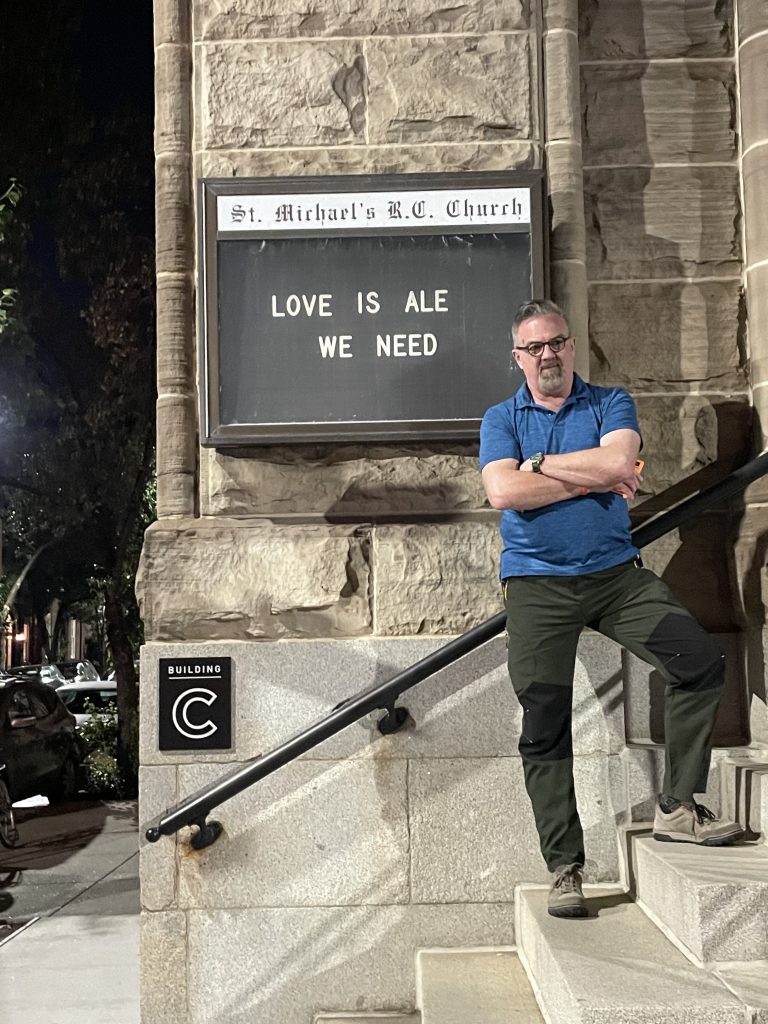
We went to Faidley’s Seafood for lunch one day next. It’s an iconic eatery in Baltimore, and we ordered items to share, since we were each trying some things for the fist time. Founded in 1886, its jumbo lump blue crab cakes are award-winning and it’s considered the place to get them. We all agreed it was very tasty, but without a lot to compare it to, it’s hard to say if it was the absolute best. We also tried our first soft-shell crab, which was served as a sandwich; I passed after one bite, as I felt like I was chewing soft crab shell (which, of course, I was). The fried oysters were a miss for me, too, but I think it was more something in the seasoning. Doug also tried National Bohemian Beer (known as Natty Boh), an American lager from Baltimore, first produced in 1885.
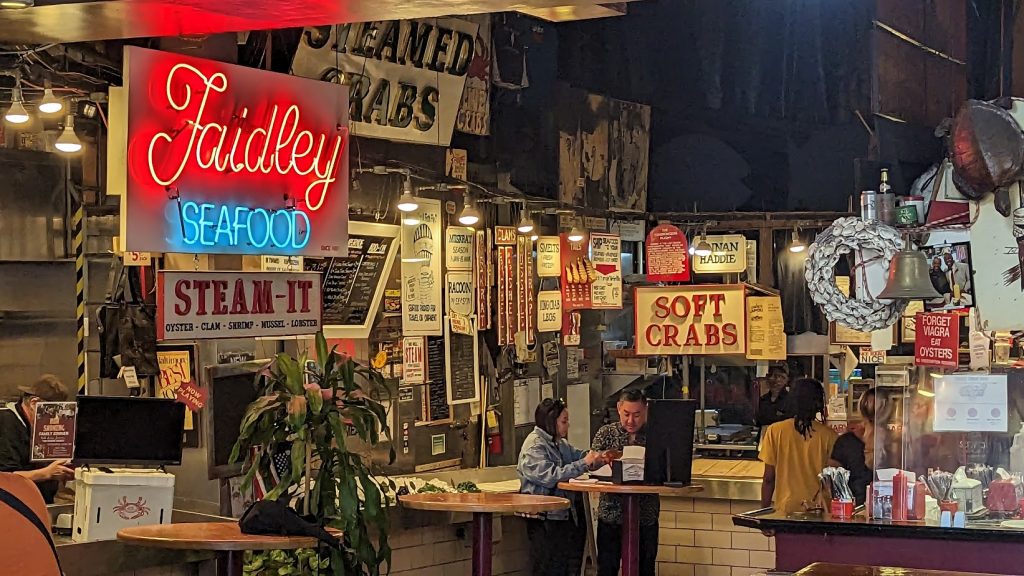
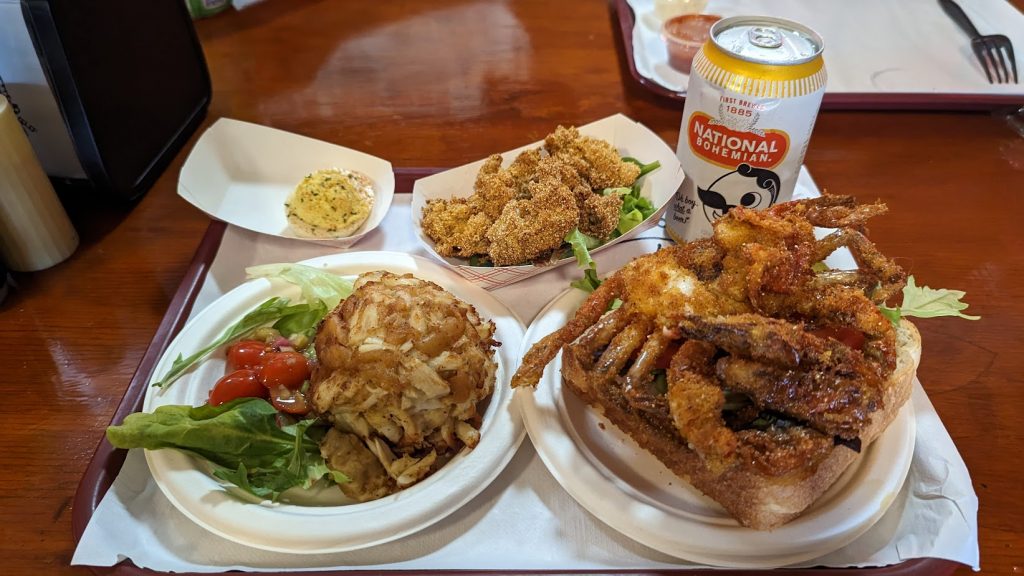
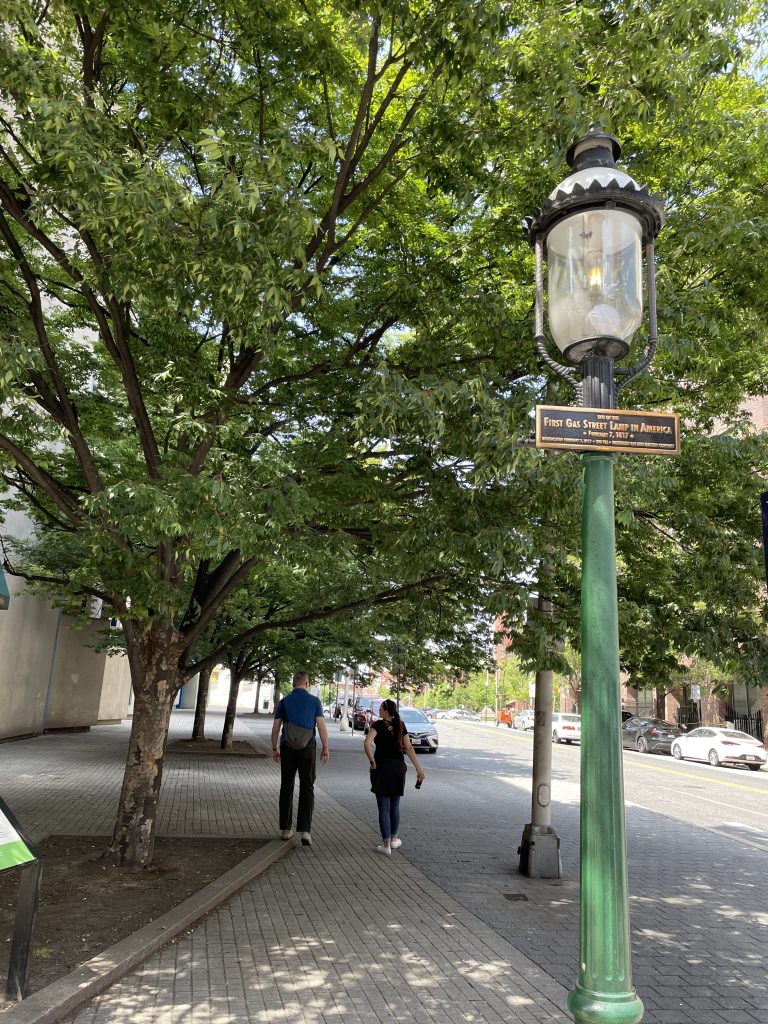
At left, it’s almost like Doug and Jen don’t even care we’re at the site of the first gas street lamp in America!
At right, a random street sculpture.
Below, Baltimore City Hall.
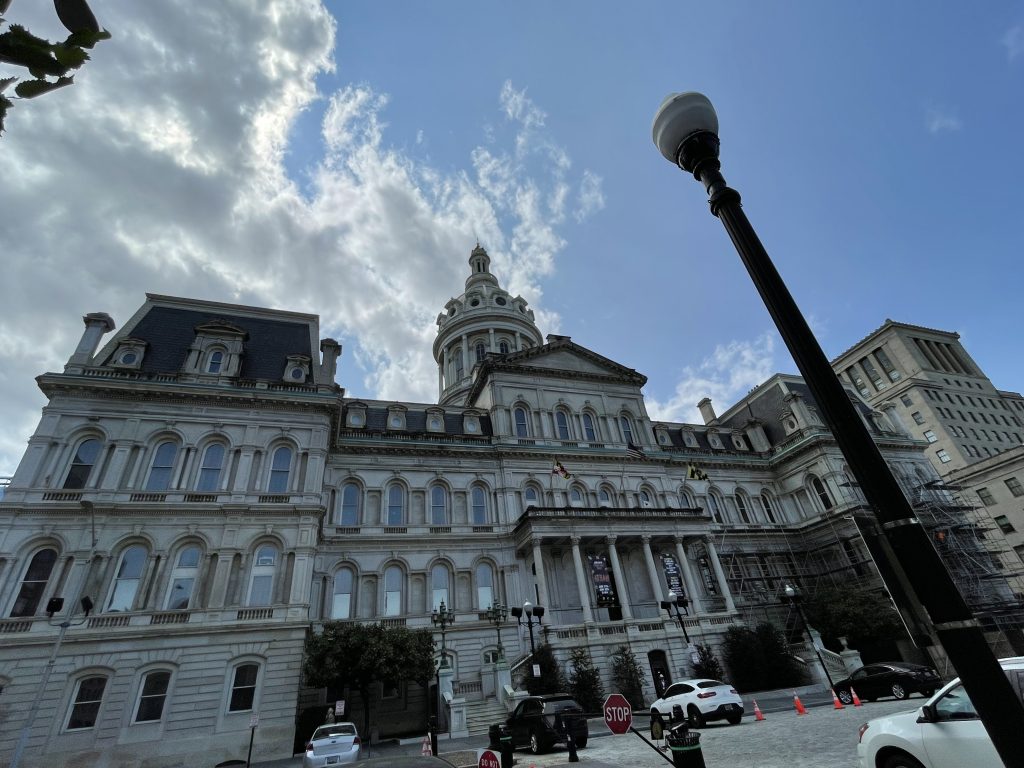
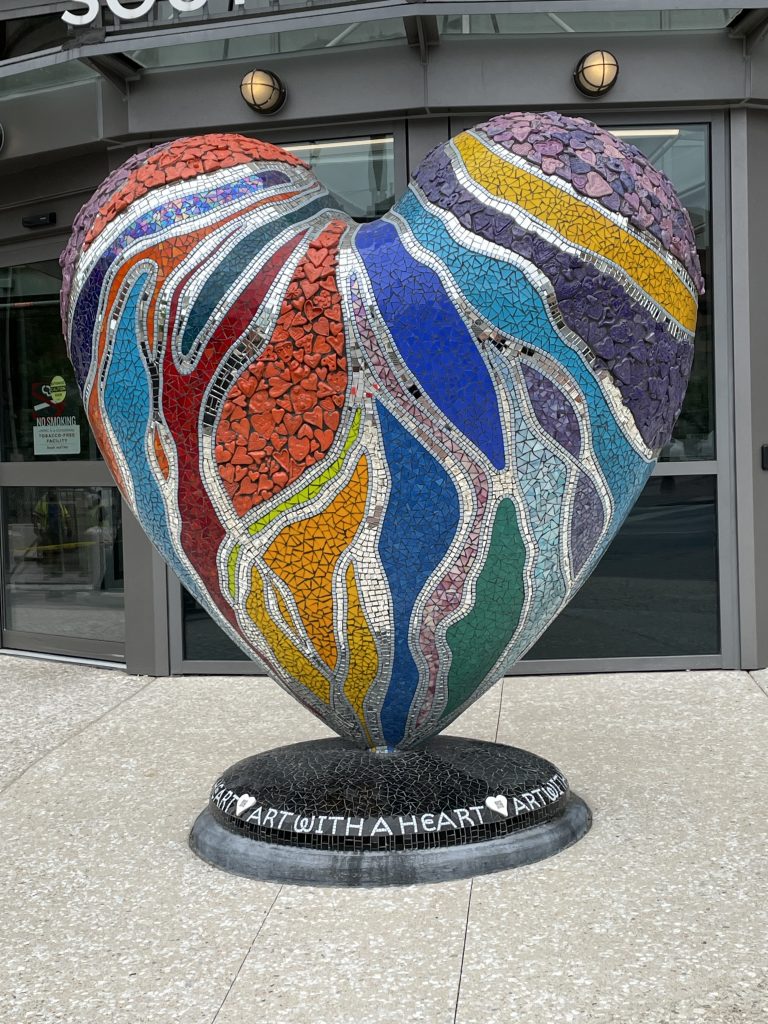
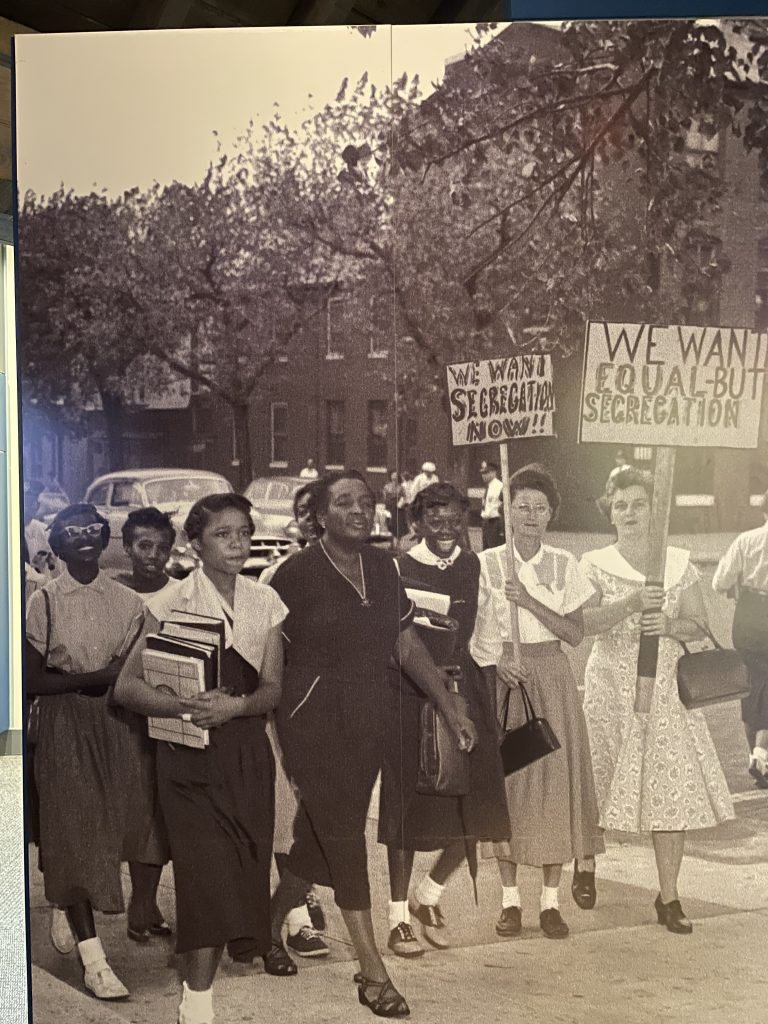
We visited the Reginald F. Lewis Museum of Maryland African-American History & Culture.
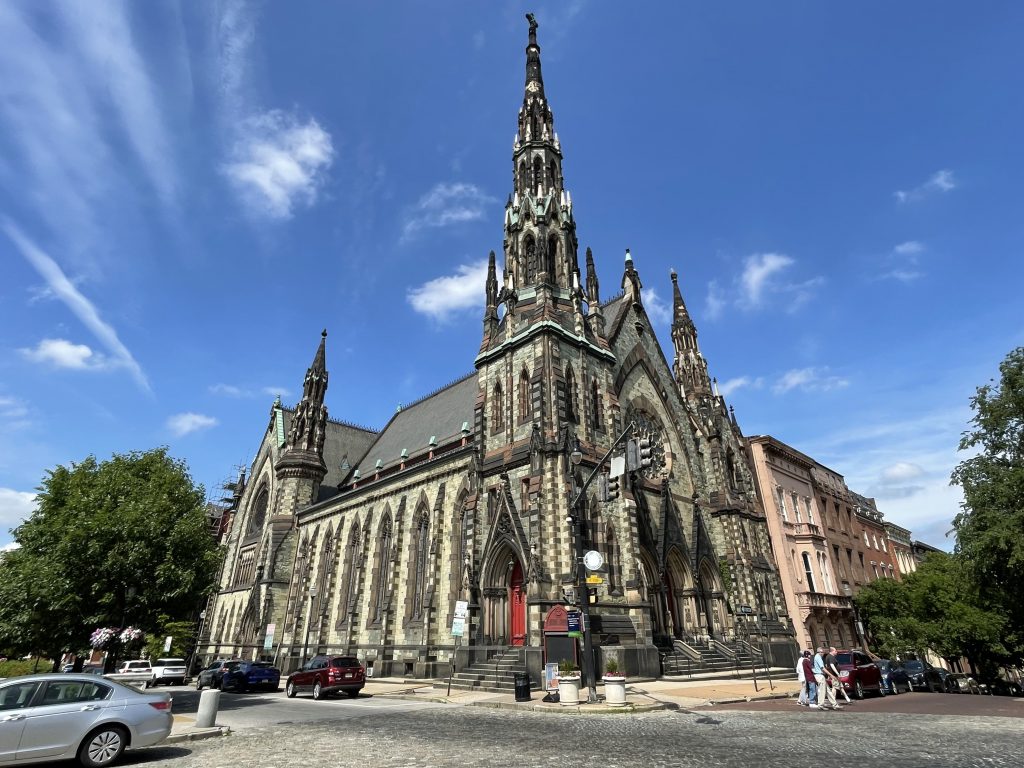
We tried repeatedly to see inside Mt. Vernon Place United Methodist Church, but the doors were always locked. It was sure beautiful on the outside! Interestingly, before the church was built this was the site of the home of Francis Scott Key‘s daughter and where the author of “The Star-Spangled Banner” passed away.
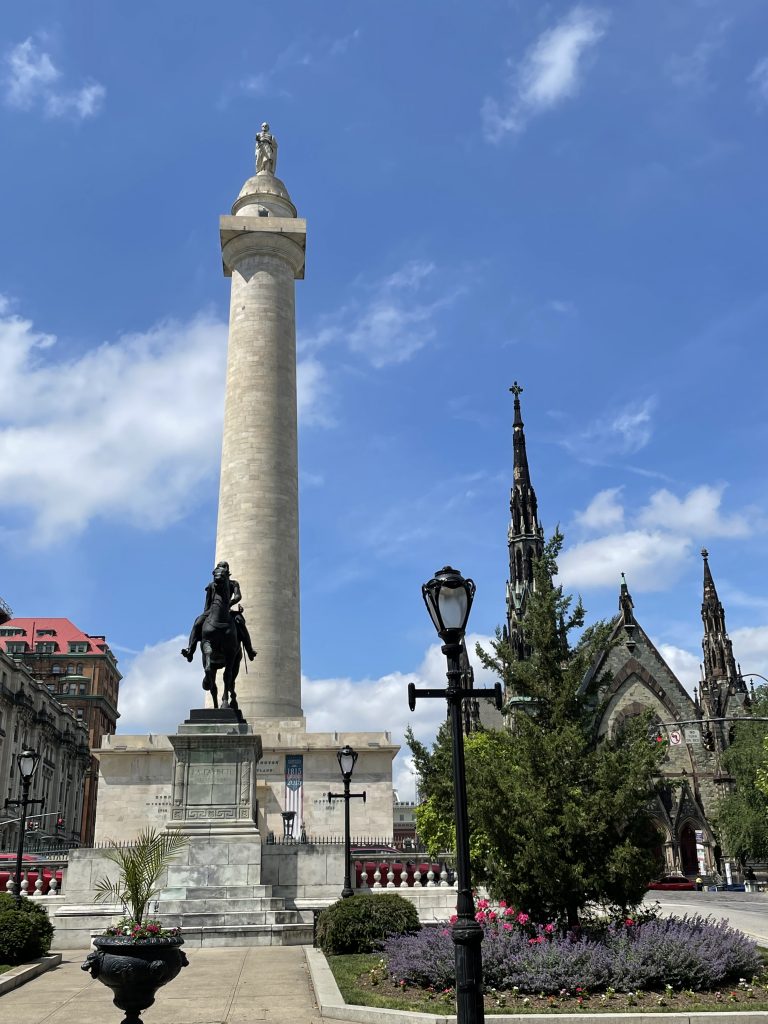
The Washington Monument at Mount Vernon Place, which of course Doug made us climb. It was only 227 steps in a cramped non-air-conditioned space on the hottest day of our visit.
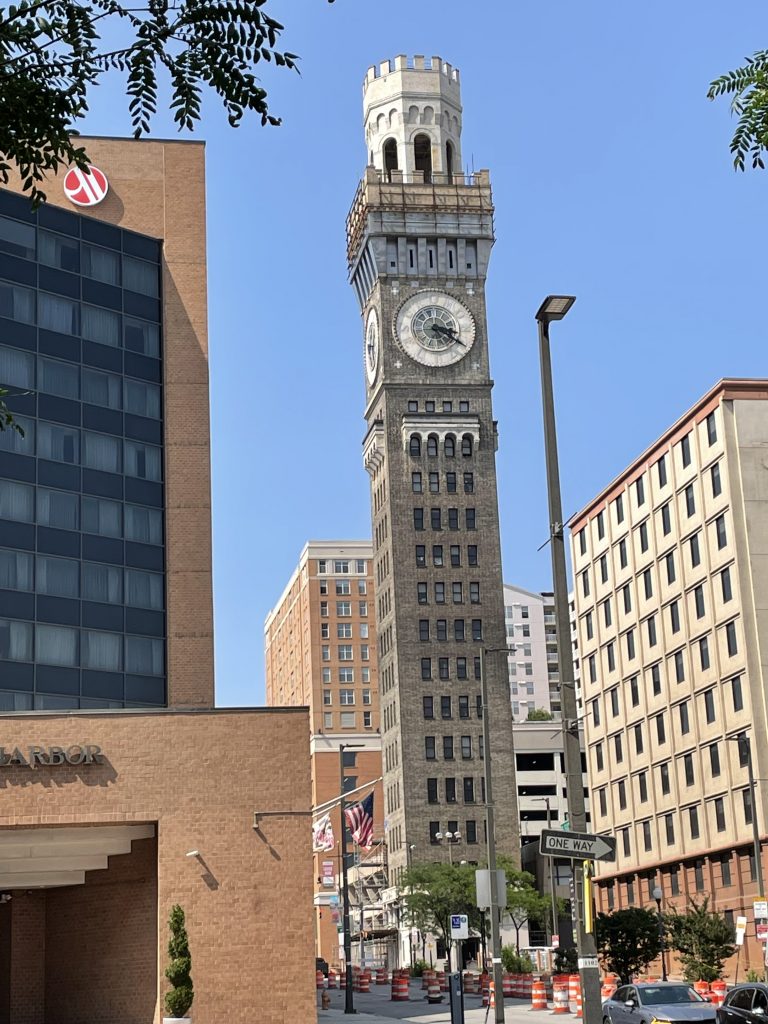
The Bromo Seltzer Arts Tower was built in 1911, modeled after the Palazzo Vecchio in Florence, Italy. It was originally called the Emerson Tower after the inventor of headache remedy Bromo Seltzer. The tower was originally surrounded by the manufacturing plant, and featured a 51-foot rotating Bromo Seltzer bottle on top (see model at right). Alas, in time the bottle had to be removed due to structural concerns. Today the building is filled with artist studios. Doug allowed us to take the elevator up to the clock room at the top, but we then walked down the stairs, seeing various artists studios and works along the way.
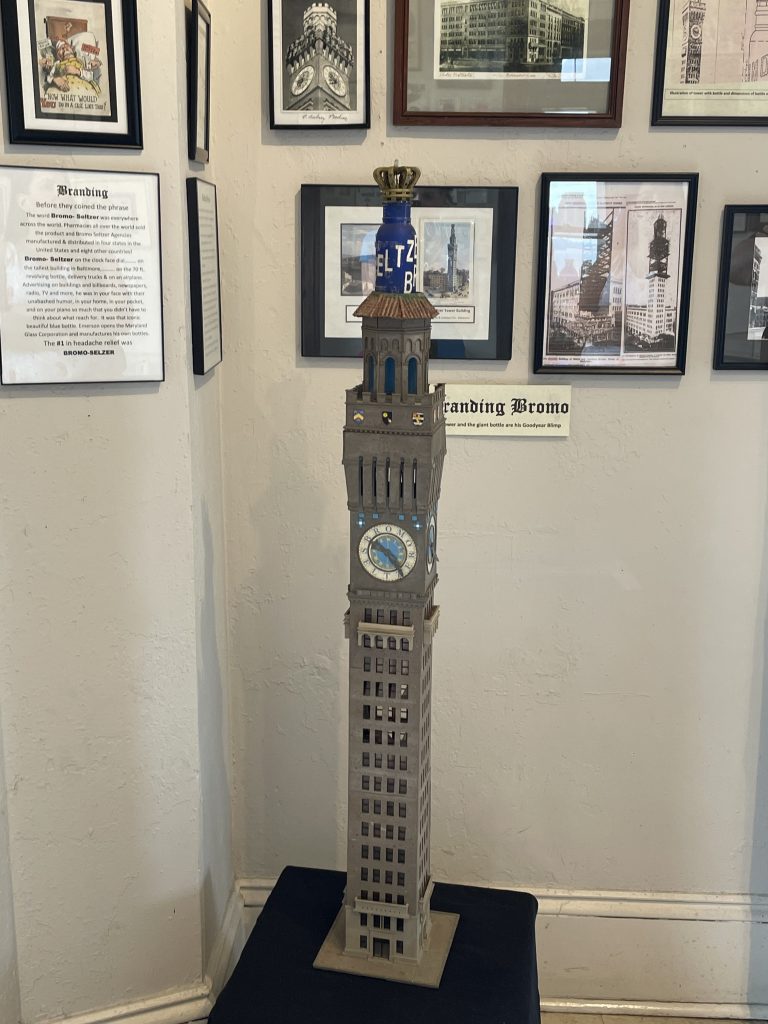
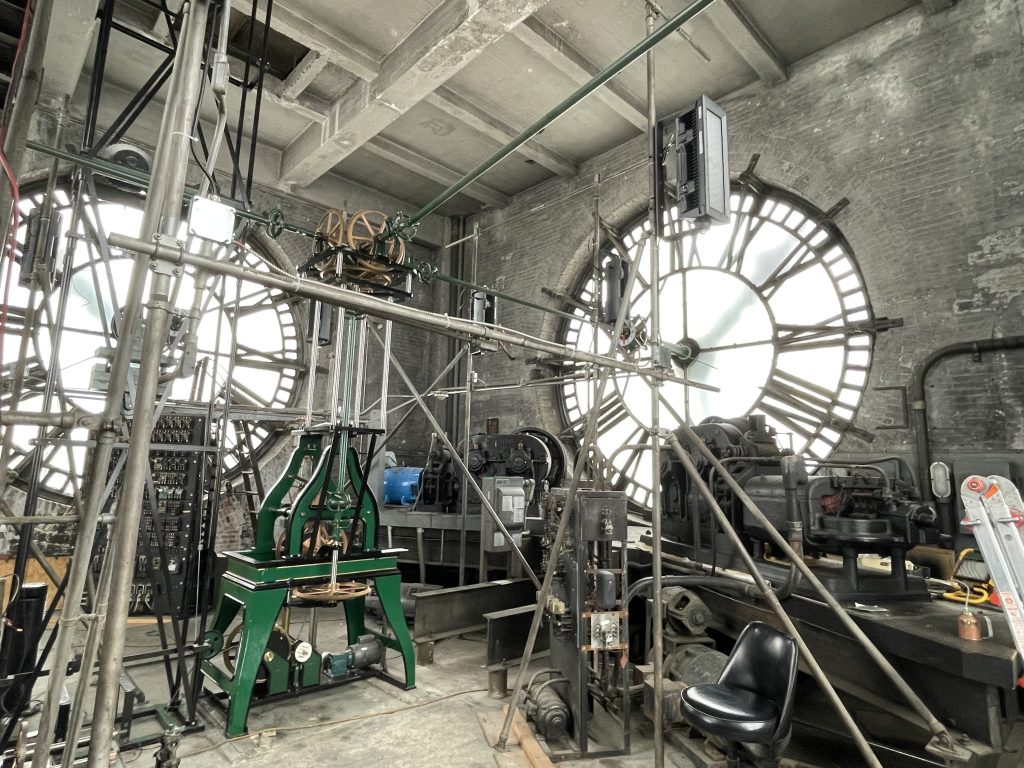
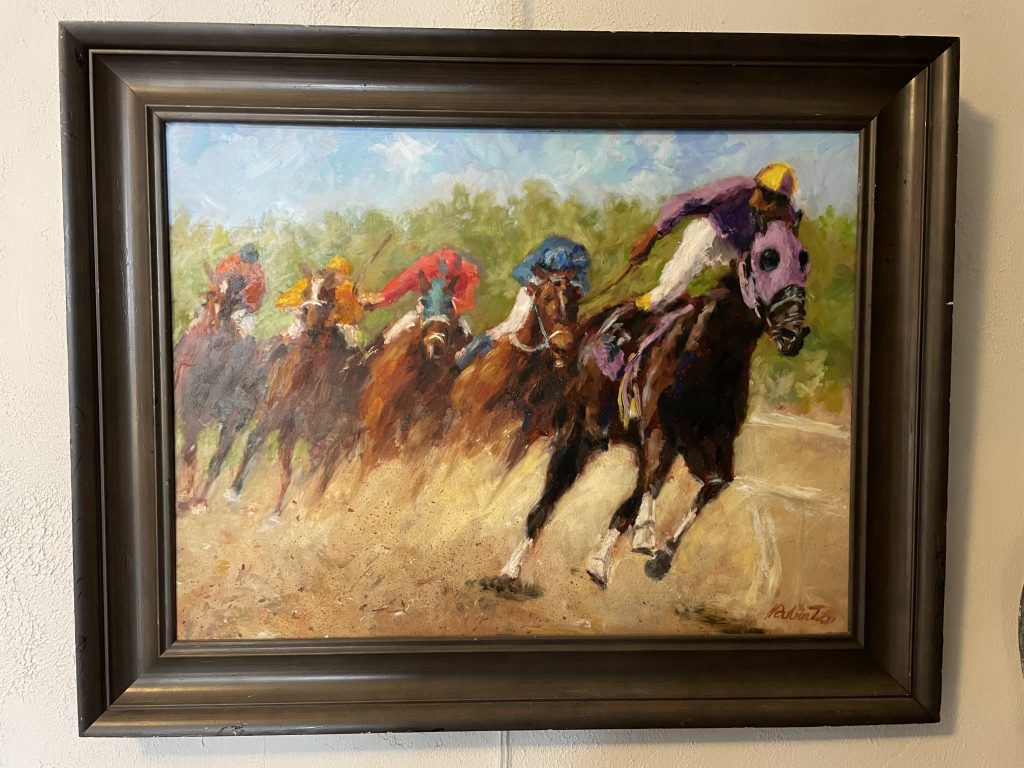

Above, Mr. Trash Wheel, strategically located in a spot in Baltimore Harbor where the tides bring in a lot of trash. The spinning wheels have pulled nearly 2,400 tons of trash out of the harbor since 2014.
At right, is the interior of the Baltimore Basilica, which includes a 75-foot dome influenced by Thomas Jefferson. Opened in 1821, it was the first Roman Catholic cathedral in the U.S.
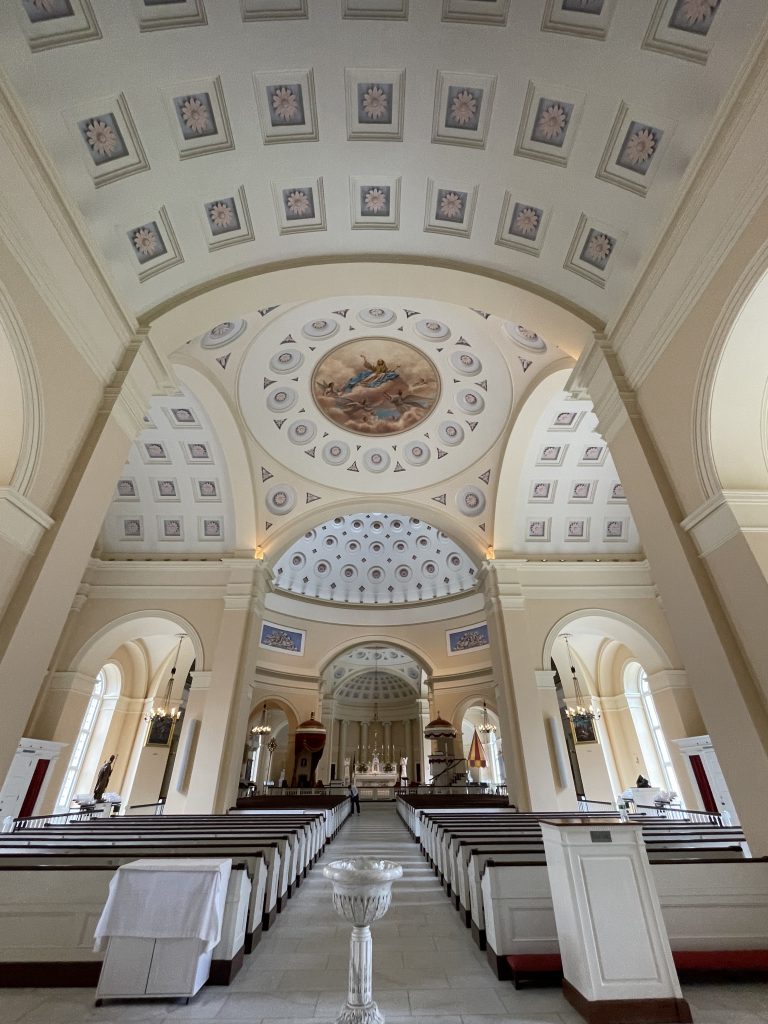
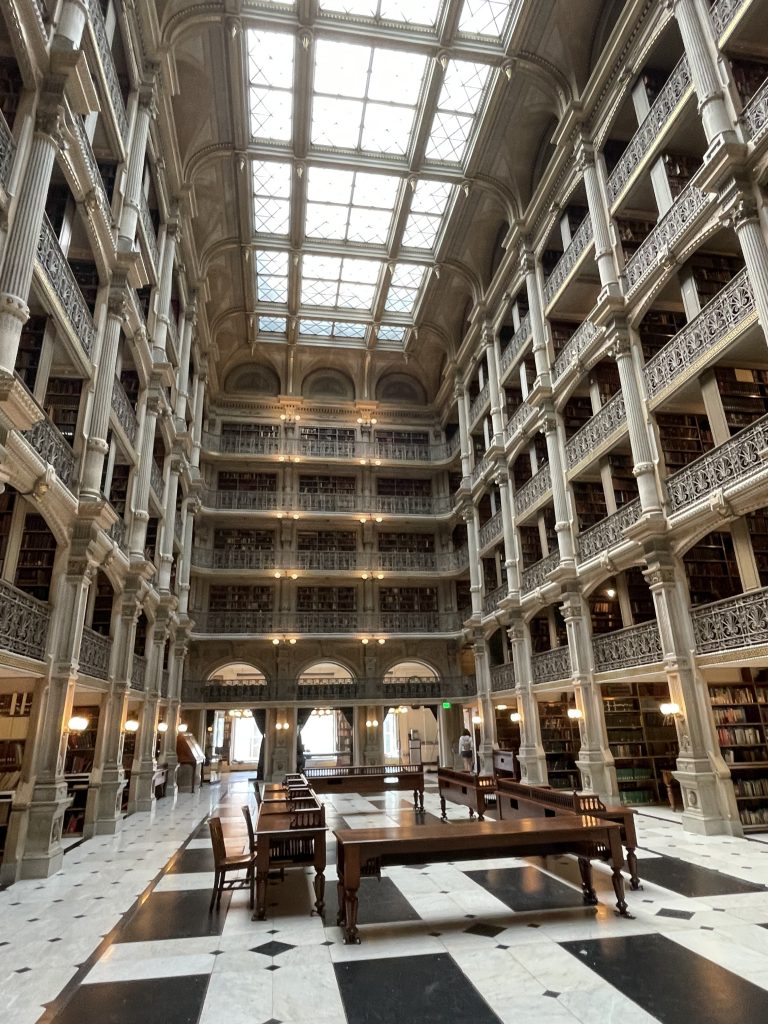

Above, Nipper keeps making an appearance in our travels (we’ve also seen him in Albany, NY; Camden, NJ; and Dover, DE).
At left, the jaw-dropping George Peabody Library, dating from 1857 when Mr. Peabody dedicated the Peabody Institute to the citizens of Baltimore in appreciation of their “kindness and hospitality.” Five tiers of balconies rise to the skylight 61 feet above the beautiful floor. It contains 300,000 volumes, mainly from the 19th Century, along with an extensive H.L. Mencken collection.
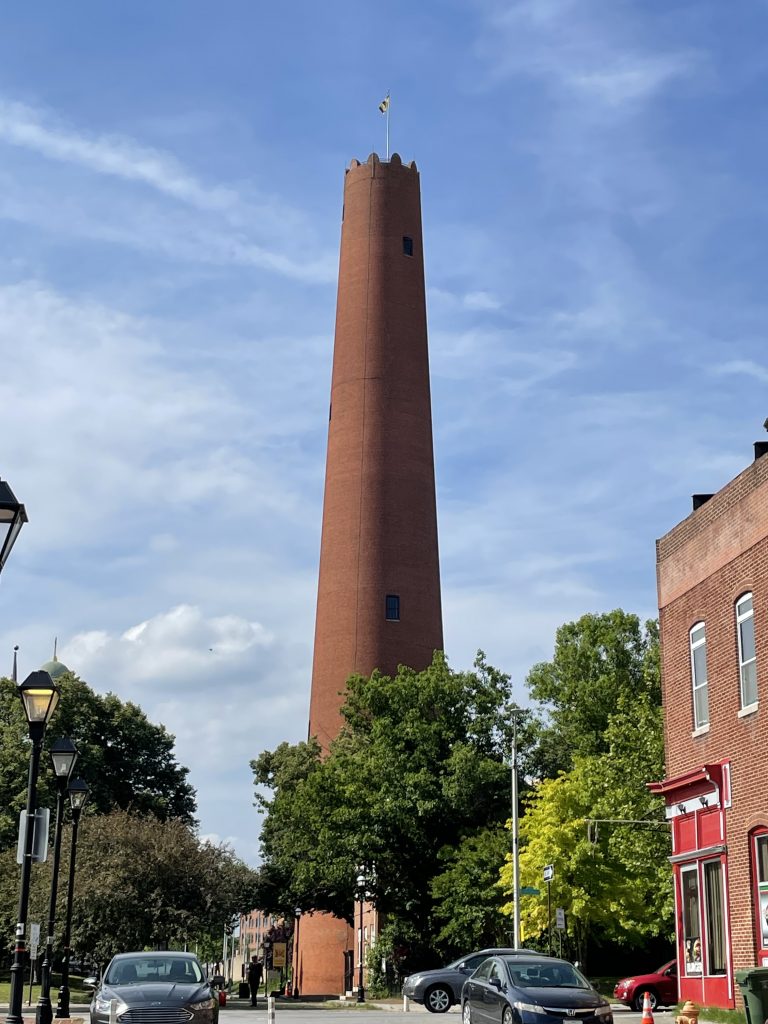
The Phoenix Shot Tower was built in 1811. At 215 feet tall, it was the tallest building in the U.S. until 1846. “Drop shot”, used for small game hunting, is made by dropping molten lead through colanders at the top of the shaft in the tower. As the lead dropped, round balls were formed. This seems crazy and dangerous, but what do I know.
The method was obsolete by 1892, and the company closed. We did an odd tour, which thankfully did not involve any climbing of steps (though Doug did his best to convince our guide to let us climb to the top).
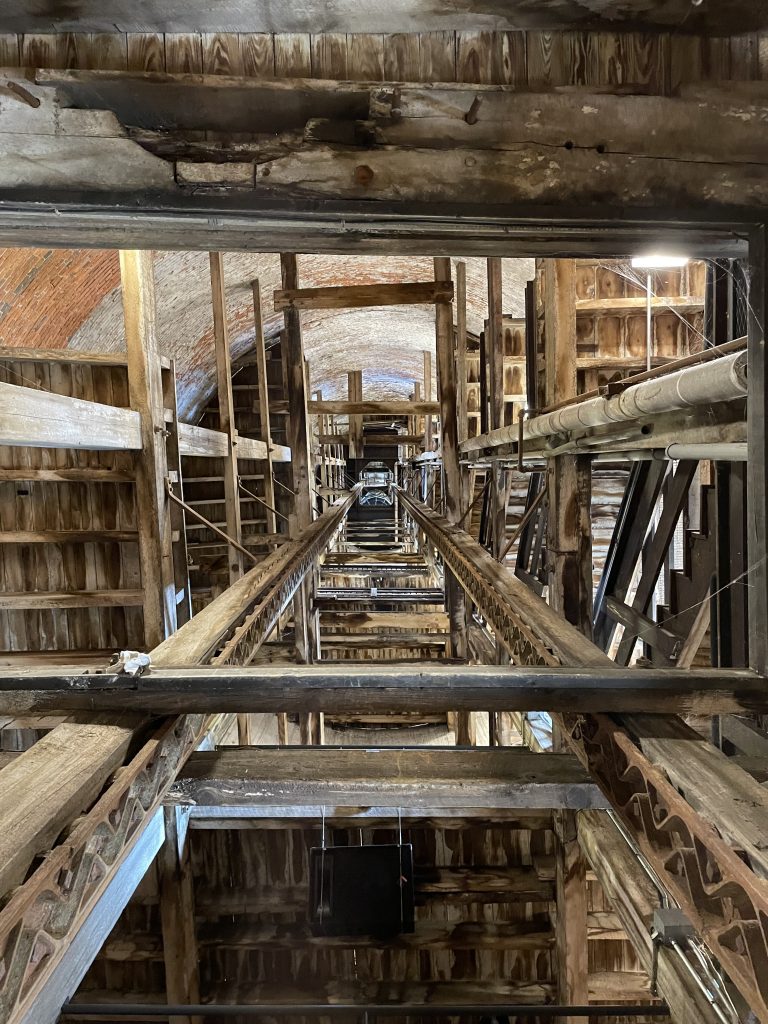
We visited The Owl Bar (below left) for a decadent and oversized brunch. While that was delicious, the main attraction for us was the owls — legend has it that during Prohibition, blinking eyes in the owls would indicate the availability of liquor to those in the know. At the bottom right are some of the Painted Ladies of Baltimore — a neighborhood of more than 60 row houses with brightly covered exteriors.
